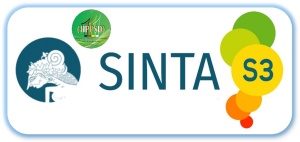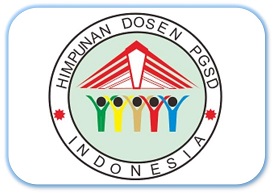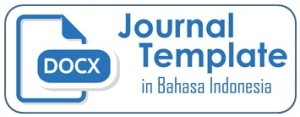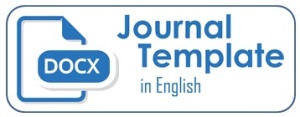Special Assistance Teachers Learning Strategies for Slow Learner Students in Inclusive Elementary Schools
 ), Bella Kirana Nur Havida(2), Afif Auliya Nurani(3),
), Bella Kirana Nur Havida(2), Afif Auliya Nurani(3), (1) Universitas Islam Negeri Maulana Malik Ibrahim Malang, Kota Malang
(2) Sekolah Dasar Negeri 2 Madirejo, Malang, Kota Malang
(3) Universitas Islam Negeri Maulana Malik Ibrahim Malang, Kota Malang
 Corresponding Author
Corresponding Author
DOI : https://doi.org/10.24036/jippsd.v7i1.122424
Full Text:
 Language : en
Language : en
Abstract
Keywords
References
Agbenyega, J. S., & Klibthong, S. (2015). Transforming Thai Preschool Teachers’ Knowledge on Inclusive Practice: A Collaborative Inquiry. Australian Journal of Teacher Education, 40(7), 57–69. https://doi.org/10.14221/ajte.2015v40n7.5
Akpan, J. P., & Beard, L. A. (2016). Using Constructivist Teaching Strategies to Enhance Academic Outcomes of Students with Special Needs. Universal Journal of Educational Research, 4(2), 392–398. https://doi.org/10.13189/ujer.2016.040211
Amdany, P., Sularmi, S., & Sriyanto, M. I. (2018). Learning Motivation Of Slow Learner In Elementary School. Social, Humanities, and Educational Studies (SHES): Conference Series, 1(1), Article 1. https://doi.org/10.20961/shes.v1i1.23506
Andiwatir, A., Nay, F. A., & Talan, R. (2021). Model Pembelajaran SCL (Student Center Learning) pada Siswa Lamban Belajar (Slow Learner) Sekolah Menengah Pertama. PEMBELAJAR: Jurnal Ilmu Pendidikan, Keguruan, Dan Pembelajaran, 5(2), 117. https://doi.org/10.26858/pembelajar.v5i2.19595
Arcidiacono, F., & Baucal, A. (2020). Towards teacher professionalization for inclusive education: Reflections from the perspective of a socio-cultural approach. Eesti Haridusteaduste Ajakiri. Estonian Journal of Education, 8(1), 26–47.
Aurelia, J. (2021, April 10). Yang Luput dari Pendidikan Inklusif di Indonesia Selama Ini. tirto.id. https://tirto.id/yang-luput-dari-pendidikan-inklusif-di-indonesia-selama-ini-gj5u
Borah, R. R. (2013). Slow Learners: Role of Teachers and Guardians in Honing their Hidden Skills. International Journal of Educational Planning & Administration, 3(2), 139–143. http://www.ripublication.com/ijepa.htm
Bubpha, S., Erawan, P., & Saihong, P. (2012). Model Development for Inclusive Education Management: Practical Guidelines for Inclusive Schools. Journal of Education and Practice, 3(8), 223–233.
Carnine, D. W., Silbert, J., Kame’enui, E. J., Tarver, S. G., & Jungjohann, K. (2005). Teaching Struggling and At-Risk Readers: A Direct Instruction Approach (1st edition). Pearson.
Coyne, M., Kame’enui, E., & Carnine, D. (2010). Effective Teaching Strategies that Accommodate Diverse Learners (4th edition). Pearson.
Creswell, J. W. (2012). Qualitative Inquiry and Research Design: Choosing Among Five Approaches (Third edition). SAGE Publications, Inc.
Creswell, J. W., & Creswell, J. D. (2017). Research Design: Qualitative, Quantitative, and Mixed Methods Approaches. SAGE Publications. https://books.google.co.id/books?id=335ZDwAAQBAJ
Dash, D. N. (2018). Problems and Challenges of Inclusive Education for Students with Special Needs. Research Paper. https://www.academia.edu/38884515/Problems_and_Challenges_of_Inclusive_Education_for_Students_with_Special_Needs
Dermawan, O. (2013). Strategi Pembelajaran Bagi Anak Berkebutuhan Khusus di SLB. Psympathic : Jurnal Ilmiah Psikologi, 6(2), Article 2. https://doi.org/10.15575/psy.v6i2.2206
Fauman, M. A. (1994). Study Guide to Dsm-IV (1st edition). Amer Psychiatric Pub Inc.
Fitriyah, A. (2018). Shadow teacher: Agen profesional pembelajaran Bagi siswa dengan disabilitas di SMP Lazuar di Kamila-GIS Surakarta. Tarbawi : Jurnal Pendidikan Islam, 15(2), Article 2. https://doi.org/10.34001/tarbawi.v15i2.845
Hamid, A., Muhammad, H., & Ullah, I. (2020). Role of Shadow Teacher in the provision of Academic and Social Support for Children with Special Needs at Inclusive Schools. Journal of Inclusive Education, 4(1), 129–144.
Hartini, A., Widyaningtyas, D., & Mashluhah, M. I. (2017). Learning Strategies For Slow Learners Using The Project Based Learning Model In Primary School. JPI (Jurnal Pendidikan Inklusi), 1(1), Article 1. https://doi.org/10.26740/inklusi.v1n1.p29-39
Haug, P. (2017). Understanding inclusive education: Ideals and reality. Scandinavian Journal of Disability Research, 19(3), 206–217.
Heikka, J., Kahila, S., & Suhonen, K. (2022). Shadowing teachers as pedagogical leaders in early childhood education settings in Finland. Journal of Early Childhood Education Research, 11(2), 151–173.
Hui, M. S. (2015). Factors influencing the success of inclusive practices in singaporean schools. University of Oslo, 1–93.
Kemenristekdikti. (2022). Guru Pembimbing Khusus. Portal Guru Pendamping Khusus. https://gpk.gtk.kemdikbud.go.id/portal/#tentanggpk
Lailiyah, N., & Jihan, F. (2015). Peranan Guru Kelas dan Guru Pendamping Khusus dalam Memberikan Bimbingan Belajar pada Siswa Berkebutuhan Khusus di Sekolah Inklusif. Jurnal Penelitian Pendidikan Khusus, 2(3), 42–51.
Lambros, K. M., Ward, S. L., Bocian, K. M., MacMillan, D. L., & Gresham, F. M. (1998). Behavioral Profiles of Children At-Risk for Emotional and Behavioral Disorders: Implications for Assessment and Classification. Focus on Exceptional Children, 30(5), Article 5. https://doi.org/10.17161/foec.v30i5.7548
Leijen, Ä., Arcidiacono, F., & Baucal, A. (2021). The Dilemma of Inclusive Education: Inclusion for Some or Inclusion for All. Frontiers in Psychology, 12. https://www.frontiersin.org/articles/10.3389/fpsyg.2021.633066
Lewis, A., & Norwich, B. (2007). Special teaching for special children? Pedagogies for inclusion. Educational and Child Psychology, 24(3), 54–67. https://doi.org/10.53841/bpsecp.2007.24.3.54
Machrus, M. A., & Desmita, N. (2019). "Strong Motivation be My Success in Teaching”: How A Teacher Handling Hyperactive Student in Inclusive School with Eliminate the Shadow Teacher. International Journal of Humanities, Arts and Social Sciences, 5(1), 1–8. https://doi.org/10.20469/ijhss.5.10001-1
Mansyur, Abd. R. (2022). Telaah Problematika Anak Slow Learner dalam Pembelajaran. Education and Learning Journal, 3(1), 28. https://doi.org/10.33096/eljour.v3i1.147
McLeod, J. (1960). The Slow Learning Child ‐‐ Segregation or Integration? The Slow Learning Child, 6(3), 170–171. https://doi.org/10.1080/0156655600060308
Melindawati, S., Apfani, S., & Suryani, A. I. (2021). Pengaruh Penggunaan Model Pembelajaran Problem Based Learning Berbantuan Media Audio Visual Terhadap Keterampilan Berpikir Kritis Mahasiswa Pada Pembelajaran Konsep Dasar IPS di PGSD STKIP Adzkia. Jurnal Inovasi Pendidikan Dan Pembelajaran Sekolah Dasar, 5(2), Article 2. https://doi.org/10.24036/jippsd.v5i2.114255
Misky, R., Witono, A. H., & Istiningsih, S. (2021). Analisis Strategi Guru dalam Mengajar Siswa Slow Learner di Kelas IV SDN 2 Karang Bayan. Rentjana Pendidikan Dasar, 1(2), 11–23.
Natalia, K. (2019). Manajemen Pembelajaran Inklusi dalam Mewujudkan Mutu Pendidikan. Media Manajemen Pendidikan, 2(1), 90–100.
Nelis, P., & Pedaste, M. (2020). Kaasava hariduse mudel alushariduse kontekstis: Süstemaatiline kirjandusülevaade [A model of inclusive education in the context of Estonian preschool education: A systematic literature review]. Eesti Haridusteaduste Ajakiri. Estonian J. Educ, 8, 138–163.
Novrizaldi. (2022). Pemerintah Wajib Penuhi Hak Pendidikan Inklusif Bagi Penyandang Disabilitas.
Nurani, A. A. (2020). Potensi Taman Kanak-kanak (TK) dalam Menyelenggarakan Pendidikan Inklusi. Indonesian Journal of Islamic Early Childhood Education, 5(1), 34–42.
Oxford, R. L. (1989). Use of language learning strategies: A synthesis of studies with implications for strategy training. System, 17(2), 235–247. https://doi.org/10.1016/0346-251X(89)90036-5
Poerwandari, E. K. (1998). Pendekatan Kualitatif Dalam Penelitian Psikologi. Lembaga Pengembangan Sarana Pengukuran dan Pendidikan Psikologi (LPSP3) Universitas Indonesia.
Purba, T. A. (2019, March 26). 70 Persen Anak Berkebutuhan Khusus Tak Dapat Pendidikan Layak. Bisnis.com. https://lifestyle.bisnis.com/read/20190326/236/904431/70-persen-anak-berkebutuhan-khusus-tak-dapat-pendidikan-layak
Rahmaniar, F. A. (2016). The Role Of Shadow Teacher On Giving Education Service For Special Students In The Inclusive School SDN Giwangan Yogyakarta. Jurnal Widia Ortodidaktika, 5(12), 52–62.
Richardson, J., & Powell, J. (2011). Comparing special education: Origins to contemporary paradoxes. Stanford University Press.
Rigney, J. W. (1978). 7 - Learning Strategies: A Theoretical Perspective 11. In H. F. O’neil (Ed.), Learning Strategies (pp. 165–205). Academic Press. https://doi.org/10.1016/B978-0-12-526650-5.50012-5
Sari, J., Feniareny, F., Hermansah, B., & Prasrihamni, M. (2023). Pengaruh Media Konkret Terhadap Pemahaman Konsep Siswa Dalam Pembelajaran IPA di Sekolah Dasar. Jurnal Inovasi Pendidikan dan Pembelajaran Sekolah Dasar, 7(1), Article 1. https://doi.org/10.24036/jippsd.v7i1.120317
Shaw, S. R. (2010). Rescuing Students from the Slow Learner Trap. Principal Leadership, 10(6), 12–16.
Stott, D. H. (1960). 3.‐‐Should We “Segregate” the Slow‐Learning Child? The Slow Learning Child, 7(1), 15–20. https://doi.org/10.1080/0156655600070104
Strauss, A., & Corbin, J. M. (1990). Basics of qualitative research: Grounded theory procedures and techniques (p. 270). Sage Publications, Inc.
Sunanto, J. (2015). Profil Implementasi Pendidikan Inklusif Sekolah Dasar di Kota Bandung. Jurnal UPI, 1(75), 147–173.
Syafriana, D. (2017). Penerapan Model Problem Based Learning (PBL) Dalam Pendekatan Saintifik Untuk Meningkatkan Hasil Belajar IPA Kelas V SDN 63 Surabayo. Jurnal Inovasi Pendidikan dan Pembelajaran Sekolah Dasar, 1(1), Article 1. https://doi.org/10.24036/jippsd.v1i1.7932
Unicef. (1989). Convention on the Rights of the Child.
UNICEF. (2022). Nearly 240 million children with disabilities around the world, UNICEF’s most comprehensive statistical analysis finds. UNICEF. https://www.unicef.org/press-releases/nearly-240-million-children-disabilities-around-world-unicefs-most-comprehensive
United Nations Educational, S. and C. O. (1994). The Salamanca statement and framework for action on special needs education.
United Nations. General Assembly. (2007). Convention on the rights of persons with disabilities and optional protocol. UN.
Wardah, E. Y. (2019a). Peranan Guru Pembimbing Khusus Lulusan Non-Pendidikan Luar Biasa (PLB) Terhadap Pelayanan Anak Berkebutuhan Khusus Di Sekolah Inklusi Kabupaten Lumajang. JPI (Jurnal Pendidikan Inklusi), 2(2), 93. https://doi.org/10.26740/inklusi.v2n2.p93-108
Wardah, E. Y. (2019b). Peranan Guru Pembimbing Khusus Lulusan Non-Pendidikan Luar Biasa (PLB) Terhadap Pelayanan Anak Berkebutuhan Khusus di Sekolah Inklusi Kabupaten Lumajang. JPI (Jurnal Pendidikan Inklusi), 2(2), Article 2. https://doi.org/10.26740/inklusi.v2n2.p93-108
Watson, D. L., & Rangel, L. (1989). Don’t Forget the Slow Learner. The Clearing House, 62(6), 266–268. https://www.jstor.org/stable/30188404
Weinstein, C. E., & Mayer, R. E. (1983). The Teaching of Learning Strategies. In Innovation Abstracts (Vol. 5, Issue 32). https://eric.ed.gov/?id=ED237180
Widodo, A. P. A., Hufad, A., Sunardi, & Nandiyanto, A. B. D. (2020a). Collaborative Teaching In Heat Transfer For Slow Learner Students. http://jestec.taylors.edu.my/Special Issue AASEC2019.htm
Widodo, A. P. A., Hufad, A., Sunardi, & Nandiyanto, A. B. D. (2020b). Collaborative teaching in heat transfer for slow learner students. Journal of Engineering Science and Technology, 15, 11–21.
Yusria. (2013). Pendidikan Inklusi Anak Usia Dini. Al-Ulum, 2, 16–25.
Yuwono, I., & Mirnawati, M. (2021). Strategi Pembelajaran Kreatif dalam Pendidikan Inklusi di Jenjang Sekolah Dasar. Jurnal Basicedu, 5(4), 2015–2020.
 Article Metrics
Article Metrics
 Abstract Views : 590 times
Abstract Views : 590 times
 PDF Downloaded : 204 times
PDF Downloaded : 204 times
Refbacks
- There are currently no refbacks.

This work is licensed under a Creative Commons Attribution 4.0 International License.







